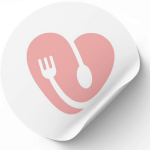Pie crusts are a beloved component of many classic desserts, offering a delightful combination of flakiness and buttery goodness. However, traditional pie crusts are often loaded with carbohydrates, making them less suitable for those following low-carb diets. But fear not, as the low-carb pie crust comes to the rescue! This innovative twist on the conventional pie crust allows you to indulge in your favorite desserts without compromising your dietary goals. In this blog, we’ll delve into what exactly a low-carb pie crust is, its health benefits, and how you can easily make it at home.
What is Low-Carb Pie Crust?
A low-carb pie crust is a variation of the classic pie crust that utilizes alternative ingredients to reduce the carbohydrate content significantly. Traditional pie crusts typically rely on flour, butter, and sometimes sugar, which can contribute to a high carb count. In contrast, low-carb pie crusts often utilize almond flour, coconut flour, or a combination of both as a substitute for traditional wheat flour. These alternative flours are lower in carbohydrates and higher in healthy fats and fiber, making them suitable for low-carb and ketogenic diets.
Health Benefits of Low-Carb Pie Crust
The health benefits of low-carb pie crust stem from the alternative ingredients used to make them, which typically include almond flour, coconut flour, or a combination of both. Here are some of the health benefits associated with low-carb pie crust:
- Reduced Carbohydrate Intake: Traditional pie crusts are usually made with wheat flour, which is high in carbohydrates. By substituting almond flour or coconut flour, low-carb pie crusts significantly reduce the overall carbohydrate content. This is particularly beneficial for individuals following low-carb or ketogenic diets, as it helps them maintain lower blood sugar levels and promotes fat burning for energy.
- Rich in Healthy Fats: Almond flour and coconut flour are naturally high in healthy fats, such as monounsaturated fats and medium-chain triglycerides (MCTs). These fats are beneficial for heart health, as they can help improve cholesterol levels and reduce the risk of heart disease. Additionally, the healthy fats in low-carb pie crusts provide a source of sustained energy, helping to keep you feeling full and satisfied for longer periods.
- High in Fiber: Both almond flour and coconut flour are rich sources of dietary fiber, which is essential for digestive health. Fiber assists with advancing normal solid discharges, forestall obstruction, and backing the development of gainful stomach microorganisms. A diet high in fiber is also associated with a reduced risk of chronic diseases such as heart disease, diabetes, and certain types of cancer.
- Gluten-Free: Many low-carb pie crust recipes are naturally gluten-free, making them suitable for individuals with gluten sensitivities or celiac disease. Gluten is a protein tracked down in wheat, grain, and rye, and can cause stomach related issues and irritation in certain individuals. By using gluten-free flours such as almond flour and coconut flour, low-carb pie crusts provide a safe and delicious alternative for those with gluten-related disorders.
- Lower Glycemic Index: Almond flour and coconut flour have a lower glycemic index compared to wheat flour, meaning they cause a slower and more gradual increase in blood sugar levels after consumption. This can help prevent spikes and crashes in blood sugar levels, which is particularly important for individuals with diabetes or insulin resistance.
- Nutrient-Rich Ingredients: Almond flour and coconut flour are not only low in carbs but also rich in essential nutrients such as vitamins, minerals, and antioxidants. Almond flour, for example, is a good source of vitamin E, magnesium, and manganese, while coconut flour provides iron, potassium, and phosphorus. By using these nutrient-rich ingredients in low-carb pie crusts, you can enhance the nutritional value of your desserts.
What You Will Love About This Recipe
There are numerous reasons to love low-carb pie crusts, including:
- Delicious Flavor: Despite being low in carbs, low-carb pie crusts are still incredibly flavorful and satisfying. The nutty taste of almond flour or the subtle sweetness of coconut flour adds depth to your favorite desserts.
- Versatility: Low-carb pie crusts can be used in a variety of sweet and savory recipes, from classic fruit pies to quiches and tarts. The versatility of this crust allows you to get creative in the kitchen while still sticking to your low-carb goals.
- Easy to Make: Contrary to popular belief, making a low-carb pie crust is relatively simple and requires only a few basic ingredients. With minimal effort, you can whip up a delicious crust that rivals its higher carb counterparts.
Ingredients you needed for Low-Carb Pie Crusts Recipes:
- Almond flower
- Coconut flour
- Fine sea salt
- Erythritol (optional this can be omitted for savory crusts)
- Cold butter
- Apple cider vinegar
- Cold water
Tips for Making Low-Carb Pie Crust
- Make sure to use finely ground almond flour and coconut flour for the best texture.
- For added sweetness, you can incorporate a low-carb sweetener such as erythritol or stevia into the crust dough.
- If the dough is too crumbly, you can add a little water or additional melted coconut oil/butter to help bind it together.
- To prevent the crust from sticking to the pie dish, you can grease the dish lightly with coconut oil or butter before pressing in the dough.
Tips for Serving and Enjoying Low-Carb Pie Crust
- Allow the pie crust to cool completely before adding your desired filling to prevent it from becoming soggy.
- Fill the crust with a variety of low-carb fillings, such as sugar-free fruit fillings, custards, or savory quiche mixtures.
- Serve slices of pie crust with a dollop of whipped cream or a scoop of sugar-free ice cream for a delicious dessert option.
- Store any leftover pie crust in an airtight container in the refrigerator for up to three days.
Equipment Need for Low-crab Pie crust
To make a low-carb pie crust, you’ll need the following equipment:
- Mixing bowl
- Measuring cups and spoons
- Pie dish
- Fork
- Oven
Expert Note
Experiment with different flavor variations for your low-carb pie crust by adding spices such as cinnamon or nutmeg, or incorporating finely chopped nuts or unsweetened shredded coconut for added texture.
Conclusion
In conclusion, low-carb pie crusts offer a tasty and health-conscious alternative to traditional pie crusts, allowing you to enjoy your favorite desserts without the guilt. By using ingredients such as almond flour and coconut flour, you can create a crust that is lower in carbs, higher in healthy fats, and just as delicious as the original. With the simple step-by-step instructions provided, you can easily make your own low-carb pie crust at home and indulge in all your favorite pies and tarts while staying true to your dietary goals.

Low-Carb Pie Crust (the best crust ever!)
Ingredients
Servings: 9-inch pie crusts
- 1 1/3 cup almond flower
- 1 tbsp coconut flour + a little more flouring the surface
- ½ teaspoon fine sea salt
- 1 tablespoon erythritol optional this can be omitted for savory crusts
- 2 tbsp cold butter cut into ½-inch dices
- 1 teaspoon apple cider vinegar
- 2-3 tbsp cold water
Instructions
- Put the flours, sea salt and erythritol, if using, in a food processor and pulse to combine.
- Sprinkle the cold butter over the flour in the food processor. Pulse until the mixture looks crumbly with larger, pea-sized chunks of butter (those chunks of butter equal a flaky crust!). Drizzle the apple cider vinegar over top.
- Turn the machine on and immediately start drizzling cold water through the feed tube.
- Stop the machine once the mixture starts to come together and looks shaggy.
- Give the dough a pinch—if it sticks together, it’s ready to go.
- If not, turn the machine on again and drizzle in a bit more water. You might not need all of the water—you’re looking for a shaggy dough, not a cohesive ball.
- Transfer the dough to a lightly floured surface and shape it into a ball, form into a flat disk.
- Wrap the disks in plastic wrap and refrigerate them for at least 30 minutes or for up to 2 days.
- If the dough has been in the fridge for several hours, let it sit at room temperature until slightly softened, about 10-20 minutes.
- Roll it out on a lightly floured piece of parchment paper. If the dough immediately starts to crack once you start rolling, it’s too cold—give it a few more minutes to warm up.
- If the edges crack as you roll (which they probably will, so no fear!) simply patch them as needed.
- To blind bake the pie crust
- Preheat the oven to 350˚F. Transfer the dough to a 9-inch pie plate, making sure to get into corners.
- Prick the bottom all over with a fork.
- Bake 15 minutes or until light golden on the bottom.
To make a pie:
- Preheat the oven to 350˚F. Transfer the dough to a 9-inch pie plate, making sure to get into corners.
- Add your desired filling and bake 15 minutes or until golden.
Note
- The wrapped disk can be placed in zip-top freezer bags and frozen for up to 3 months. Thaw in the refrigerator overnight before using.
- The crust can be blind baked up to 1 day in advance.
- If the pie crust is to crumbly, the dough needs to be processed longer.
Enjoy and Love, Your Pure Plate!
Video
Thank You
Thank you so much for reading this blog! I hope you try this recipe and that you enjoy it as much as my family and I did! When you do make this, be sure to tag me on Instagram @pure_plates_recipes!
See you soon!
Love, Your Pure Plate!
Low-carb made with Love



